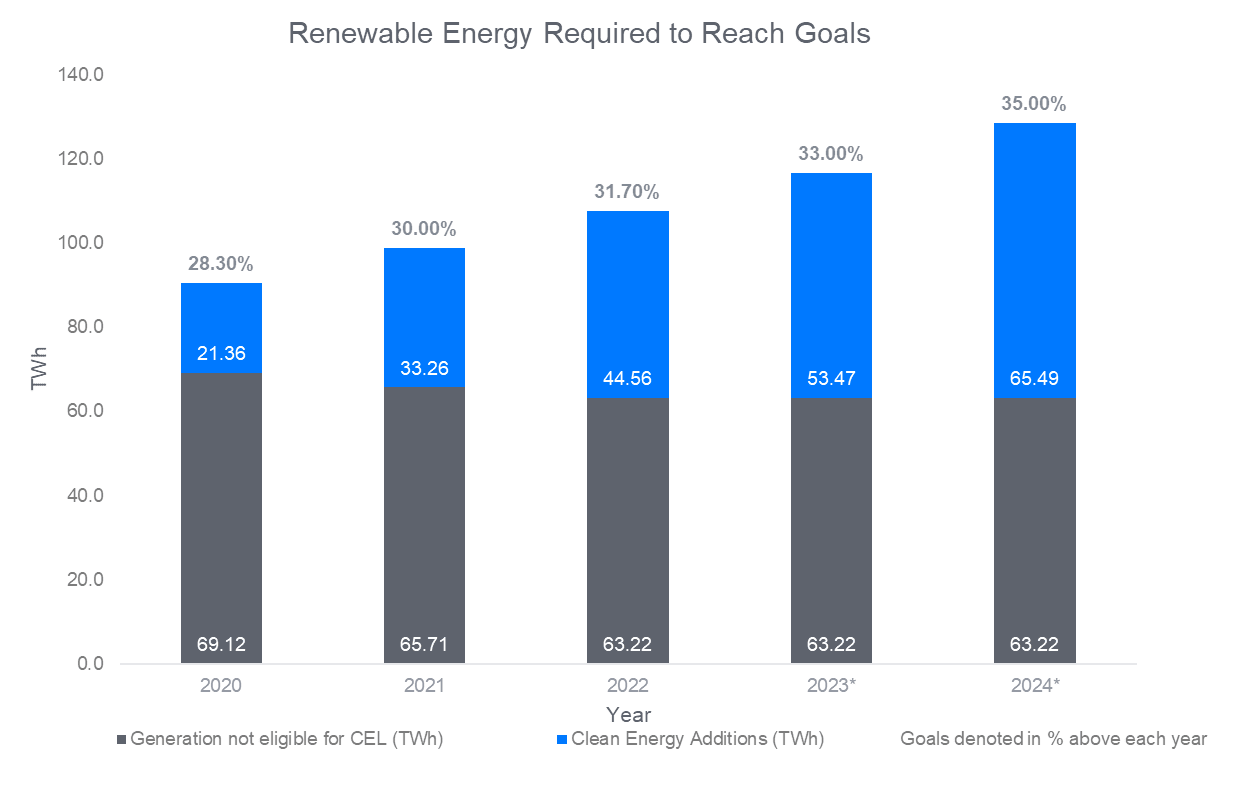This is a 2-part feature where we will be exploring Mexico’s clean energy goals and the steps they will need to take in order to meet them.
In 2012, Mexico announced its intent to join other countries around the world in an effort to minimize the global temperature by 2°C (ideally 1.5°C) by instituting Clean Energy Goals (“CEGs”). These CEGs were first established in the General Law on Climate Change (the “Climate Change Act”). With the 2014 energy reform, the Mexican Constitution set forth that the power sector shall have emission reduction goals and CEGs. The Intended Nationally Determined Contribution (non-binding national plans highlighting climate actions, including climate-related targets for greenhouse gas emission reductions, policies, and measures) to reach the Paris Agreement for Mexico is to reduce 51% of black carbon emissions by 2030, and 22% of greenhouse gas emissions (“GHG”) by 2030 using the 2013 baseline. The CEGs were established again in Mexico’s Energy Transition Law in 2015.
Clean Energy Certificates (“CELs”) were created as part of the energy reform as a mechanism to foster new renewable energy generation – namely, “clean energy”- capacity. Generators would obtain 1 CEL for every MWh generated. Generators could then sell CELs to large electricity users looking to satisfy their obligation to comply with Ministry of Energy requirements. New clean generation would be encouraged because developers would benefit from two revenue streams: the sale of power and the sale of CELs.
The chart below demonstrates the CEGs through 2024, as set by law, and the amount of clean energy needed to achieve those goals.

Graph 1. Estimated clean energy requirements (informed by SENER and CRE publications)
From 2022 to 2024 the volume of energy not eligible for CELs (power projects developed prior to goals) remained static because no energy was planned to come offline during that time. To reach the CEGs, Mexico must add renewable generation indicated in blue to 35% in 2024.
As published by the Ministry of Energy in PRODESEN 2020-2034, Mexico reported that 25.44% of the generation came from clean energy sources1 as of October 2020. Official information is not available for Q4 2020, which would confirm whether the goal of 28.30% of Clean Energy Generation in 2020 was met.
Last year, the Ministry of Energy was scheduled to publish the Clean Energy Requisite, providing the percent of clean energy needed to reach the CEGs. The last Clean Energy Requisite of 13.9% was published for 2022 but no obligation has been set for 2023 or 2024. Estimates of the required amount of clean energy needed to meet the goals are 16.2% and 19.3% respectively. These numbers are increasing because Mexico will need to generate approximately 65 TWh of clean energy in 2024 to meet stated goals.
While many projects from long-term auctions began operations this year, adding to new capacity, the Administration has granted few generation permits. Seemingly, climate goals have not been a priority for the Administration. According to information by the Energy Regulatory Commission (“CRE”), only 4 renewable energy permits were granted in 2020 and no new permits in 2021, diminishing the amount of installed capacity for coming years. At this stage, the carbon market seems to only benefit large producers, since the carbon market is only operational for installations that are over 100,000 Ton CO2. In fact, the Administration’s actions have favored the use of fossil fuels (including natural gas) in the generation of electricity. The first renewables projects, according to PRODESEN will be built in 2027, well beyond the CEGs timeline.
While there is still time for Mexico to reach its clean energy targets, the current trajectory it is on seems unlikely. Edison will continue to monitorMexico’s compliance with their CEGs and the impact it may have on the energy market. Interested in more information on this topic? Contact Edison today!
Be sure to check back for part two of this feature for a follow-up post that will dive into ways the private sector could help Mexico achieve its Clean Energy Goals.
[1] Considering only the Clean Energy Percentage of Efficient Cogeneration, if 100% is considered the percentage increases to 27.56%
zpryme
Residing in Austin, Zpryme is a research, media, and events agency with a focus on energy. Based on the creative direction of our associates Zpryme, produces influential research, Energy Thought Summit (ETS), and premium branding experiences that challenge the status quo.